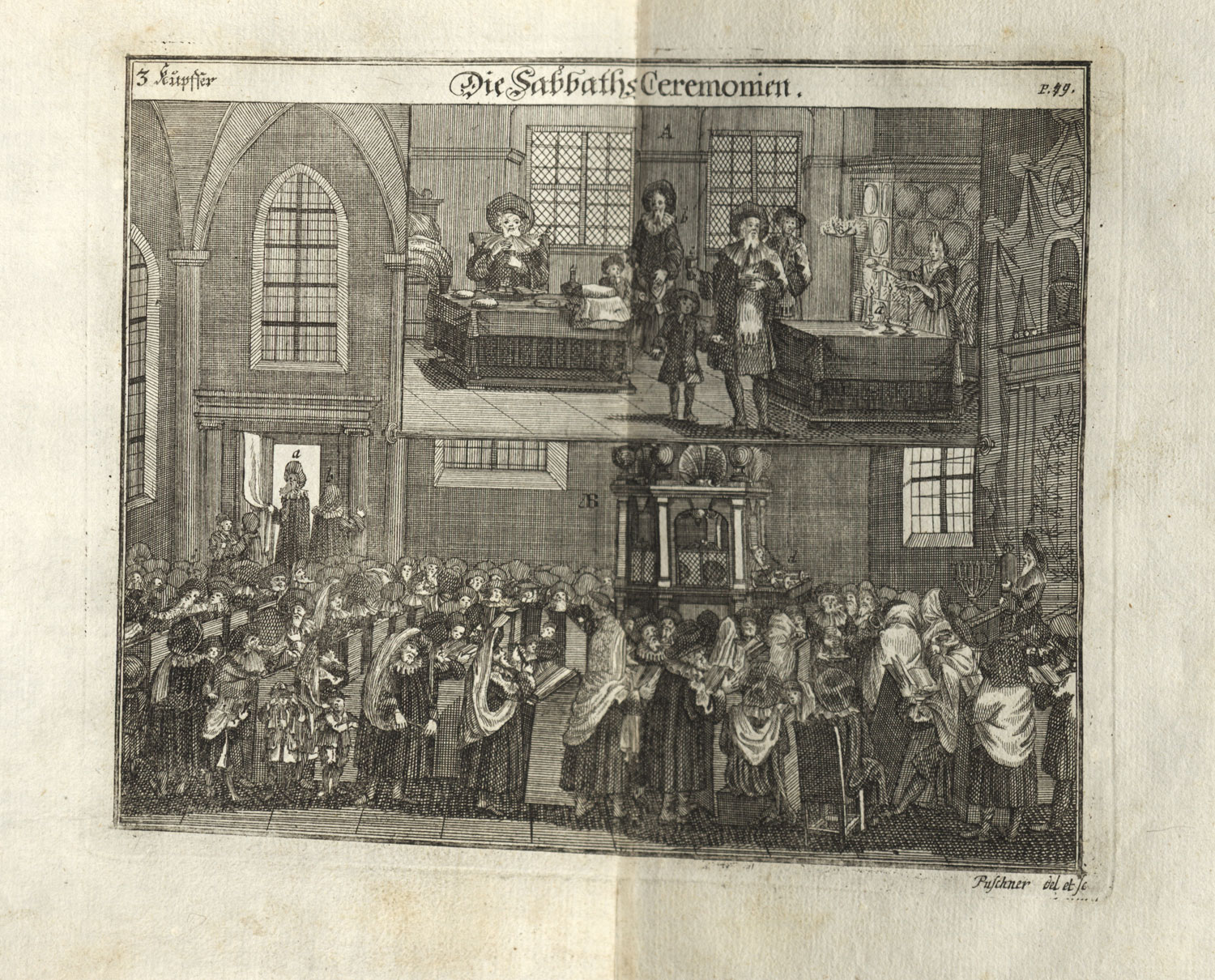Like Johannes Pfefferkorn (1469–1523), Paul Christian Kirchner was a Jewish convert to Christianity, and his original publication of Jüdisches Ceremoniel (1717) was intended to disparage Jewish practice and to encourage conversion. For this reason, Kirchner’s original publication contained a biased and inaccurate depiction of Jewish ritual. The 1724 edition of the work contains text significantly overhauled by Christian Hebraist Sebastian Jugendres (1685-1765), who revised or rewrote Kirchner’s original text both to correct inaccuracies and soften its tone, adding extensive annotations, and incorporating illustrations such as this depiction of the Jewish Sabbath. While still imperfect, due to Jugendres’s lack of first-hand experience with the rituals he was describing, his text and images provide a relatively accurate and comprehensive depiction of contemporary Jewish life.
This engraving includes multiple images of the Sabbath corresponding to the accompanying explanatory text that describes the celebration, which takes place from sundown on Friday to sundown on Saturday, at length. Sabbath observance begins in the home on Friday evening, when the woman of the house lights and blesses the Sabbath candles, shown at right in the inset scene. The text describes preparations beginning even earlier in the day, with the head of the household buying fish for the Friday evening meal and the woman of the house baking challah.
The written account details the ceremonies taking place in the synagogue, in which men and boys participate, over the course of the Sabbath observance. Four services are held at specific times of day: Friday evening, early Saturday morning, Saturday evening at four o’clock, and Saturday night (when the stars are in the sky). Elements of each of these services are depicted in the engraving. Upon entering the synagogue, congregants first perform a ritual washing of hands, as shown in the entryway at left. Readings from the Torah are depicted in the center of the engraving. Men are crowded at their benches, prayer books in hand, many wearing prayer shawls over their heads, suggesting the fervent mood of the observance. The details of the scene provide valuable information about how a synagogue was furnished and used in this period.
